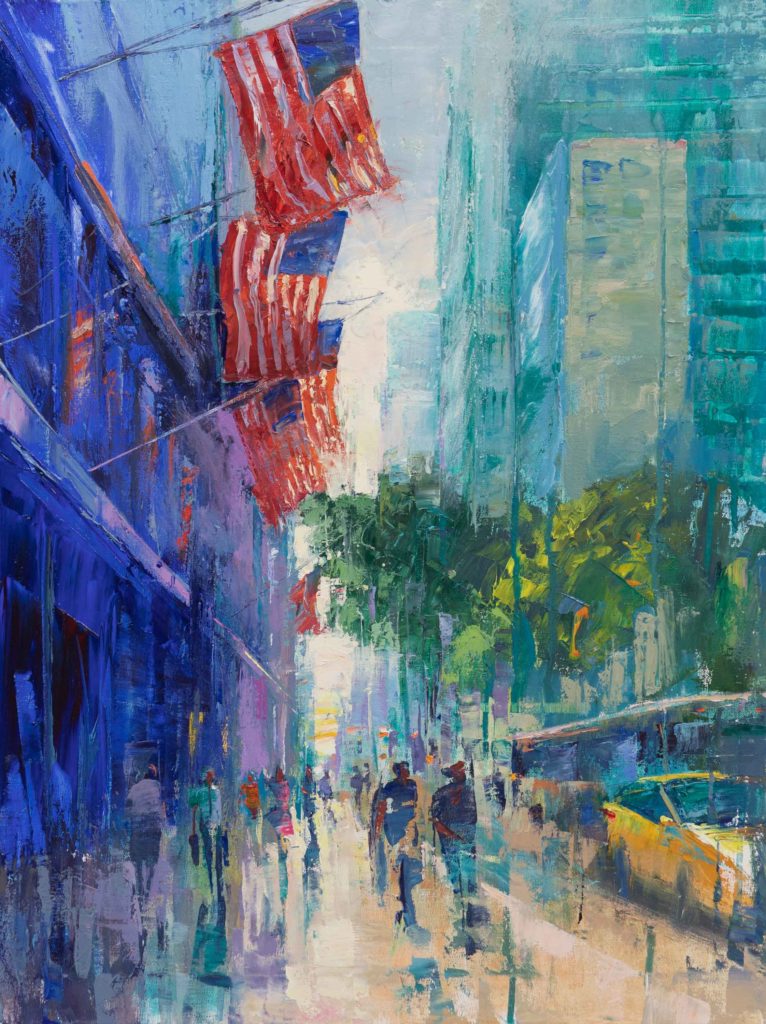Affordable New and Old Oil Paintings for Sale
Wiki Article
Discovering Everything About Oil Paints: A Guide to Recognizing Their Appeal and Value
Oil paints have actually mesmerized audiences for centuries, supplying a glance right into the creative mastery of different eras. Their rich history is linked with cutting-edge methods and extensive emotional expression. Comprehending the materials and techniques behind these art work can boost admiration. Additionally, the marketplace for oil paints presents chances for investors and collectors alike. As one explores this fascinating world, the question develops: what makes an oil painting truly beneficial?The Background of Oil Paint: A Trip Through Time
Although oil paint has origins that date back to ancient times, it really grew during the Renaissance, when artists found its convenience and abundant shade possibility. Early examples can be traced to the 7th century, with methods evolving notably throughout societies. The tool came to be popular in Northern Europe in the 15th century, particularly via the works of artists like Jan van Eyck, that originated its use for thorough realism and vivid tones. This period noted a departure from tempera paints, permitting better depth and texture. As oil painting spread, it affected numerous artists, bring about masterpieces by distinguished numbers such as Leonardo da Vinci and Rembrandt. The tool's tradition continues, shaping the art globe well right into contemporary times.Comprehending Oil Repaints: Materials and Techniques
As artists explore the globe of oil paints, they encounter a varied selection of materials and strategies that define this medium. The main parts of oil paint include pigments, which offer shade, and drying oils, such as linseed, that bind the pigments and promote application. Different additives can change the paint's appearance and drying time, boosting convenience. Techniques like glazing, where transparent layers are developed, and impasto, which entails using thick paint, enable various visual results. In addition, the usage of brushes, palette knives, and also fingers can create unique structures and finishes. Recognizing these techniques and products allows artists to fully express their creative thinking and accomplish the wanted effect in their artwork.The Function of Shade in Oil Paintings
Color plays a critical duty in oil paints, influencing both aesthetic appeal and emotional vibration. Recognizing shade theory essentials, consisting of the connections in between colors, can boost an artist's capacity to share state of mind and environment. Furthermore, grasping color mixing methods enables higher deepness and richness in a paint's scheme.

Shade Theory Basics
Comprehending shade concept is necessary for musicians working with oil paints, as it forms the foundation for producing harmonious and visually appealing structures. Color theory encompasses the study of how shades connect, the shade wheel, and the partnerships in between main, secondary, and tertiary colors. Artists use corresponding shades to improve contrasts and create focal factors, while analogous shades promote unity and cohesiveness within an item. Additionally, the concepts of trendy and cozy shades influence the understanding of depth and space in a paint. Grasping these concepts enables artists to adjust color successfully, assisting the visitor's eye and interacting their designated message. Mastery of color concept ultimately improves a musician's capacity to share feelings and concepts with their job.
Psychological Influence of Shade
The psychological influence of shade in oil paints plays a vital duty in how customers connect and view with artwork. Shades evoke details feelings and moods, affecting the viewer's emotion. Cozy colors like oranges and reds can develop a sense of warmth and power, while cool tones such as blues and eco-friendlies often evoke peace or self-contemplation. Artists strategically choose shade palettes to boost narrative components, assisting the audience's emotional trip. The saturation and contrast of colors additionally amplify these impacts, attracting interest and producing emphasis. Eventually, the interplay of colors in oil paints not only boosts their aesthetic charm however additionally serves as a powerful tool for emotional expression, enriching the customer's experience and analysis.Color Combining Techniques
While numerous facets of oil painting add to the overall make-up, understanding color blending techniques is necessary for achieving desired results and depth. Color mixing can be come close to via various techniques, including the subtractive and additive procedures. Additive mixing entails integrating shades of light, while subtractive blending counts on pigments, where colors blend to produce brand-new tones. Musicians often use a minimal scheme to develop unified jobs, comprehending the relationships in between main, second, and tertiary colors. Techniques such as glazing and scumbling better improve depth and brightness. By skillfully blending shades, a musician can stimulate feelings, develop centerpieces, and achieve a sense of realism, eventually raising the painting's visual and emotional effect.Famous Oil Painters and Their Iconic Functions

Renowned for their mastery of shade and technique, oil painters have actually developed some of one of the most celebrated art work in history. Prominent musicians like Vincent van Gogh mesmerized target markets with his stirring brushwork in "Starry Night," while Claude Monet's "Impression, Sunrise" prepared for Impressionism. Leonardo da Vinci's "Mona Lisa" stays an enduring sign of imaginative brilliant, showcasing his ability in recording human expression. At the same time, Rembrandt's "The Night Watch" shows his ingenious usage of light and shadow. Other noteworthy figures include Pablo Picasso, that reinvented modern-day art with his strong testing in works like "Les Demoiselles d'Avignon," and Georgia O'Keeffe, whose vibrant representations of landscapes and flowers helped define American innovation. Each artist's one-of-a-kind style contributed greatly to the oil painting landscape.
Just how to Examine the Top Quality of an Oil Paint
Assessing the top quality of an oil paint includes a careful analysis of workmanship methods, along with an evaluation of shade and composition. Observing brushwork, layering, and the application of paint can disclose the artist's ability degree. Furthermore, the interaction of colors and the overall plan of components add substantially to the painting's visual value.Assessing Workmanship Techniques
A thorough analysis of craftsmanship techniques is vital for determining the quality of an oil paint. Critics need to first take a look at the application of paint; thick, textured brushstrokes might suggest a knowledgeable hand, while extremely uniform applications might show an absence of depth. oil paintings for sale. The layering technique is likewise crucial; the existence of lusters and varied density can boost luminosity and complexity. Furthermore, the top quality of the materials utilized, such as the canvas and pigments, plays a significant function in resilience and overall visual. Interest to information in aspects like edges and changes in between colors shows the musician's dedication to their craft. Eventually, these strategies contribute to the paint's emotional impact and market worth, functioning as indications of the artist's skill and intentEvaluating Color and Make-up
While reviewing the high quality of an oil painting, one must concentrate on the interaction of color and composition, as these aspects are basic to the art work's total impact. Color options can establish and stimulate feelings state of mind; for that reason, the musician's palette need to be examined for consistency and contrast. A well-balanced make-up directs the viewer's eye and develops a feeling of unity. Artists often use techniques like the guideline of thirds or leading lines to boost aesthetic passion. Additionally, making use of light and darkness can add deepness, enhancing the three-dimensionality of the painting. Inevitably, a successful oil paint weds color and make-up, engaging the audience and welcoming a deeper admiration of the artist's vision and strategy.Taking care of and Preserving Oil Paintings
Appropriate care and preservation of oil paintings is vital for preserving their honesty and long life. To secure these artworks, it is vital to present them away from straight sunshine, which can create fading and staining. Maintaining a stable atmosphere with controlled temperature level and moisture additional help in avoiding damage. Cleaning ought to be done gently utilizing a soft, completely dry cloth, avoiding any harsh chemicals that could harm the paint or varnish. Regular evaluations for indicators of deterioration, such as flaking or splitting, are recommended. When transferring or saving oil paints, appropriate extra padding and framing are essential to prevent physical injury. Eventually, persistent care adds to the aesthetic charm and value of oil paintings with time.The Market for Oil Paints: Investing and gathering
Recognizing the market characteristics for oil paintings is essential for investors and collectors alike. The worth of these artworks is influenced by different factors, consisting of the musician's online reputation, historic significance, and current fads. Collection agencies typically look for pieces that reverberate personally while considering possible gratitude in value. Galleries and auctions serve as primary places for buying and marketing, with costs changing based upon need and rarity. Buying oil paints calls for research into the market, along with an understanding of credibility and provenance. Additionally, arising musicians might offer possibilities for significant returns, while developed names can command high costs. read more In general, a strategic technique to accumulating can generate both visual enjoyment and monetary incentives.
Regularly Asked Inquiries
What Are the Ecological Influences of Oil Painting Products?
The ecological influences of oil paint products consist of the launch of unstable natural substances (VOCs), dangerous waste generation, and source removal for pigments. These factors add to pollution and eco-friendly deterioration, elevating problems amongst environmentally conscious artists and customers.Just How Do Different Canvases Influence Oil Painting Results?
Various canvases influence oil paint results substantially. Absorbency, surface, and structure high quality can alter paint application, drying out times, and color vibrancy. Musicians typically pick particular canvases to attain preferred impacts and boost their creative expression.Can Oil Paintings Be Restored if Harmed?
If damaged, Oil paints can certainly be restored. Professional conservators make use of numerous techniques to repair rips, tidy surface areas, and address staining, guaranteeing that the artwork retains its initial elegance and worth for future generations.What Are the Indications of an Original Oil Paint?
The signs of an original oil paint include noticeable brush strokes, texture variants, and an irregular canvas weave (oil paintings for sale). In addition, credibility may be confirmed with provenance, trademarks, and the visibility of a varnish layer special to oil mediumsJust How Has Modern Technology Influenced Modern Oil Paint Techniques?
Modern technology has actually greatly affected modern-day oil painting strategies by introducing digital tools for planning, enhanced products for structure and durability, and on the internet platforms for offering and sharing art, thus broadening musicians' innovative possibilities and audience reach. Oil painting has origins that date back to old times, it absolutely thrived during the Renaissance, when musicians discovered its flexibility and abundant color capacity. The psychological effect of color in oil paintings plays a vital role in just how audiences regard and attach with artwork. While several aspects of oil painting contribute to the general structure, mastering color mixing methods is important for accomplishing desired effects and deepness. Evaluating the top quality of an oil paint includes a cautious analysis of workmanship strategies, as well as an evaluation of shade and make-up. While evaluating the high quality of an oil paint, one need to concentrate on the interplay of shade and composition, as these elements are essential to the artwork's overall influence.Report this wiki page